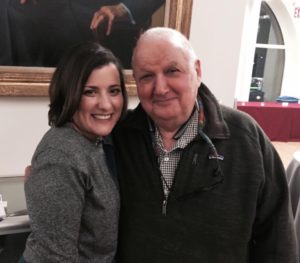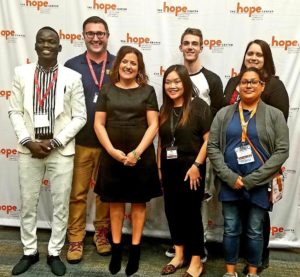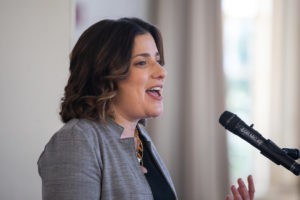To high school seniors,
Family matters. Ever since I was little, my grandfather has talked to me about the important role education plays in our family. He went to college on the GI Bill, which helped veterans pay for tuition. Education brought so many amazing blessings to his life, including my grandmother, who probably wouldn’t have married him if he hadn’t gone to college!
As graduating seniors, you are right to think about more education after high school. You know it can help you secure a decent job and have a more stable life. But if you think of fraternity parties, football games, and fancy dorms when you picture college, you might be in for some surprises. I want you to succeed, so let’s talk a little about what is really happening.
When my grandfather went to college in the 1940s, the government made it financially possible. Even in the 1970s, the government still enticed people to go to college by making it financially feasible. For every dollar of tuition, the government paid about 75 cents.


Now, even though more people want to attend college, the government has changed the deal. It picks up only about 25-50 cents on the dollar, passing the rest on to you and your family.
When my grandfather went to college, housing was affordable, and so was food. It was possible to work a part-time job and make ends meet without too much trouble. But those days are over. Yes, there is financial aid available, but usually it barely covers tuition and maybe fees. You’ve still got to pay for rent, electricity, water, internet, food, transportation, doctors’ bills, and so on!
When I began teaching, like you, I wasn’t fully aware of what those costs were doing to students.
Enter Your Email to Unseal Premium Content
In 2004, I was working at the University of Wisconsin – Madison when I noticed that there was a woman in one of my classes who kept falling asleep. Second-guessing myself as a professor, I bought books on how to become a better teacher in hopes of grabbing her attention.
Nothing worked.
Finally, I asked her to come to see me during my office hours.


I just looked at her and said, “What is going on? Why are you sleeping in my class?”
She started crying and explained, “I get off work an hour before your class in the morning. I work the graveyard shift every night, stocking shelves at the grocery store. It’s the only job I can get.”
I told her to quit her job and I hired her as my research assistant. She did well, graduated from college and went on to get her masters degree in education. But the problem was far greater than one student’s circumstance.
A few years later, I had an awakening of sorts and decided to further study the financial challenges of college students.
In one study, we simply asked students, “How are you?
A woman, 18 years old and attending a university, responded, “I’m not OK.”
When we asked why, she said, “I haven’t eaten in two days.”
It turns out that hunger and even homelessness are pervasive problems for college students of all genders and all races. It’s not just about people who grew up in poverty. It’s an American problem, as many of the students that are struggling come from middle-class backgrounds. The price of college is just more than they can bear.
It turns out that hunger and even homelessness are pervasive problems for college students of all genders and all races.
Some students show up to class smelling badly because they can’t afford to do laundry. I know a student who slept in her car with her cat. Another student didn’t have a place to live, so she couch-surfed with her nine-year-old child for more than a year.


I knew a student who aspired to be a veterinary technician. She worked two jobs while attending school. Her grades tanked and the school told her she was going to lose her financial aid. She dropped out after one semester of school, which she paid for, in part, with loans. Now, she’s walking around with college loans but only a high school degree.
As an educator, I am past the stage of heartbreak. I am fed up. To create change, I run the Hope Center for College, Community and Justice, where we research solutions. I created a nonprofit called Believe in Students, which raises money for emergency situations. One of our programs is called the FAST Fund—we give money to professors so they can help students quickly. My team is trying to teach colleges how to develop stronger emergency aid programs and how to effectively reach out to students. We’re working to change federal policy because federal policy makes it harder for students to get help. Also, I am the chief strategy officer of a new company that has found a way to give students emergency aid quickly through an app, so students don’t drop out of school over $200.
Even with my efforts to change the system, the problems with higher education won’t be fixed quickly. You, as students, need to enter college with your eyes wide open.
First of all, let’s get real: there are more than 4,000 colleges in this country but we only talk about 100 of them. Don’t go and pick an excessively expensive college unless it offers you a ton of financial grants and promises you can have them for all the years you’re in college. Consider your local university or community college—they are legitimate options. You can always transfer to a “brand name” school later, or save money for graduate school.
You need to take into account the fact that financial aid barely covers tuition and fees. Rent, food and transportation are all costly expenses. If you’re going to live in an apartment, you’re going to have to pay for water, gas and electricity. You can join programs offered by utility companies to lower your bills. You might need to also sign up for a program that offers reduced-priced food; it’s called SNAP.


On your campus, make sure you find an advisor to guide you through your decisions. Find this person right away when you arrive, and visit them every semester. Even if you don’t think you need help, at least check in to make sure you are taking the right classes and are getting all of the help they can offer you. Find out where the food pantry is, and whether there is a program to give you free meal swipes for the cafeteria in case you run out.
In all likelihood, at some point during college, you will fall short on money. If and when that happens, don’t be afraid to contact your college—usually the Dean of Students. They may have backup money in the form of an emergency grant.
Always remember, there is no shame in asking for help. You aren’t alone in needing support—everyone, even rich people, get help every day. You deserve it.
My grandfather is now 92 years old. I talk to him often. He tells me to keep fighting for you and pushing to make sure we eliminate the barriers to education. He says that without you, our country will move backwards. We need you to face down the real price of college, be the warriors we know that you can be, and get those degrees. Then please, go out and change the world.
I believe in you,










